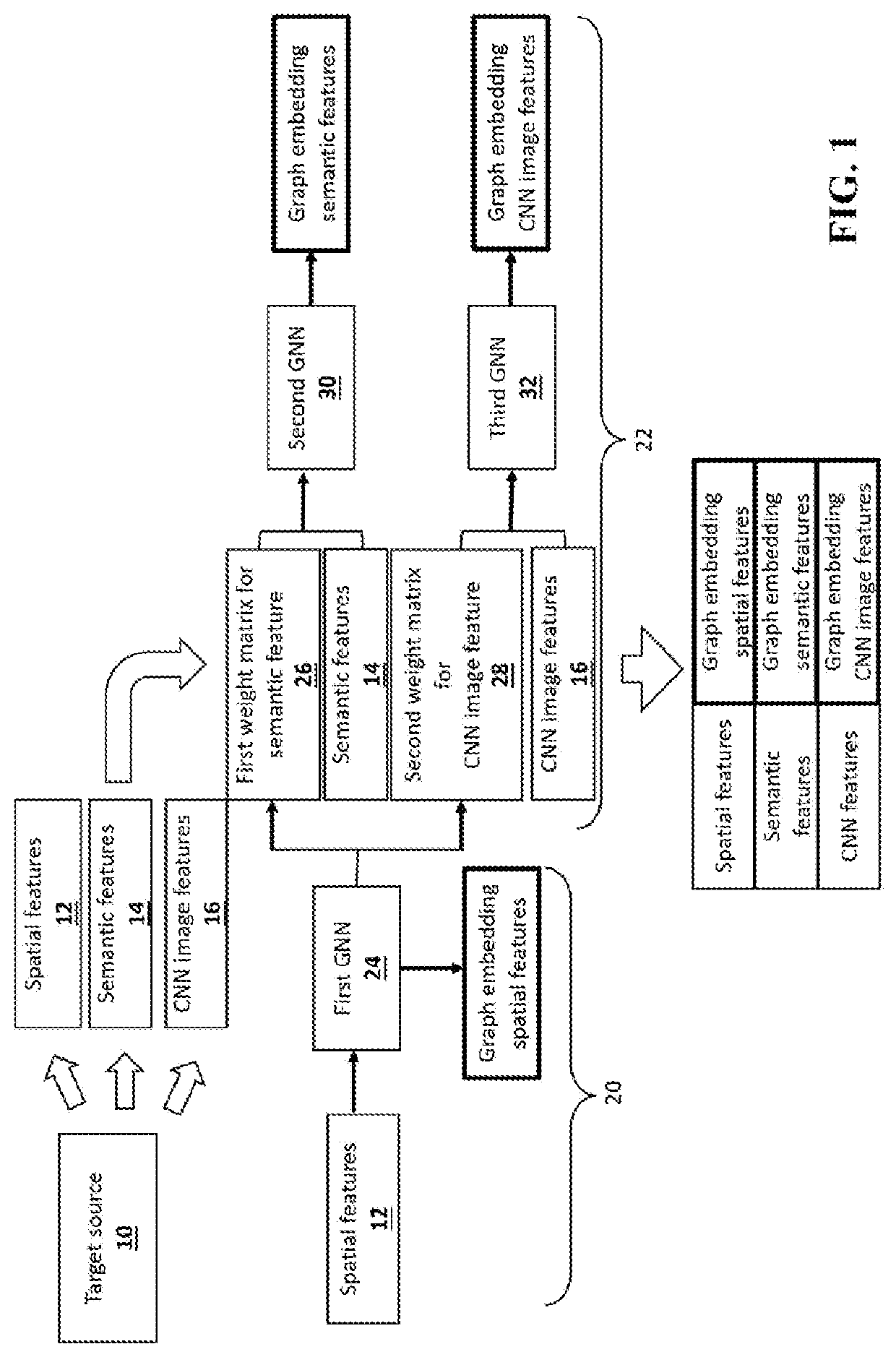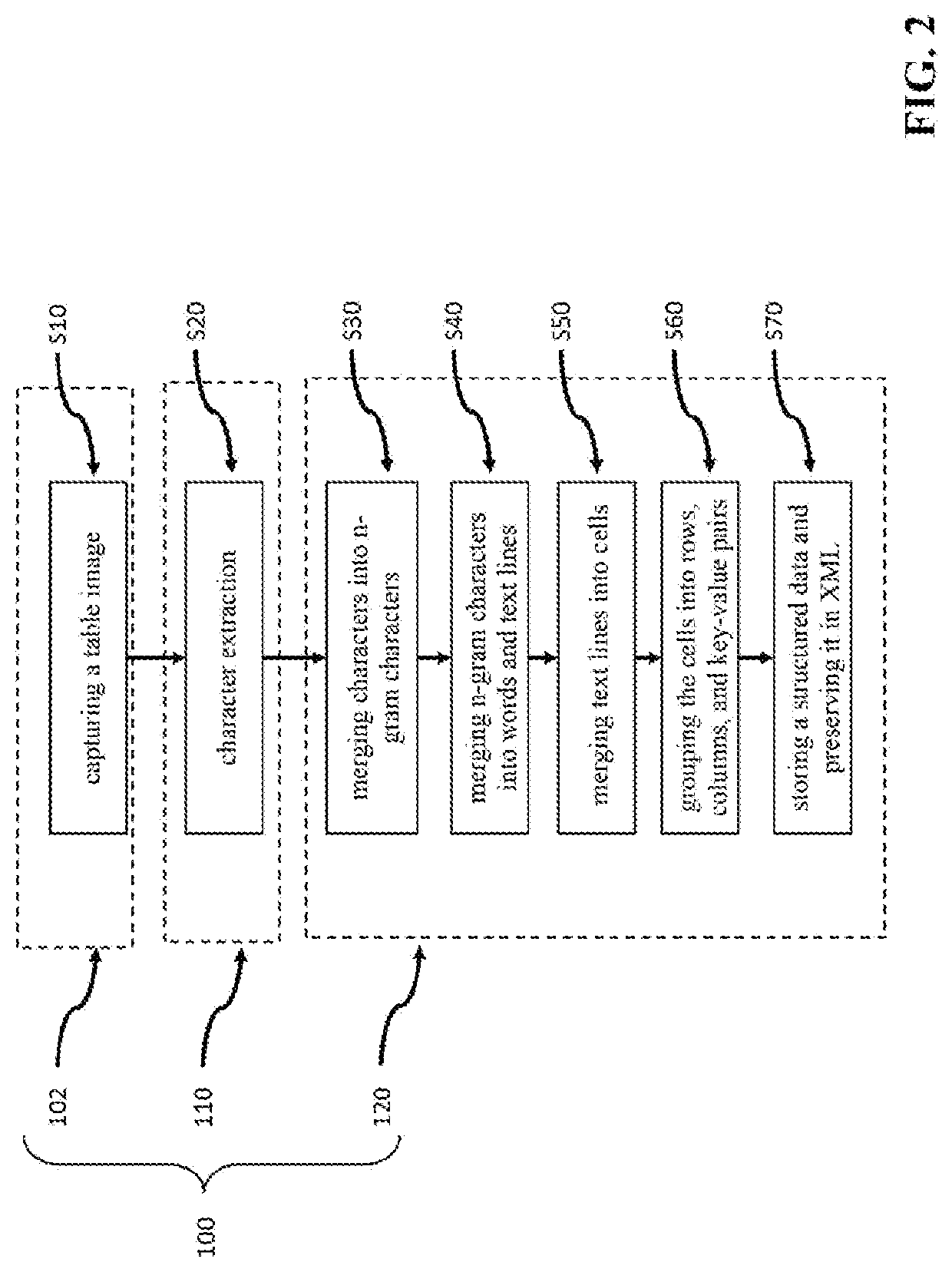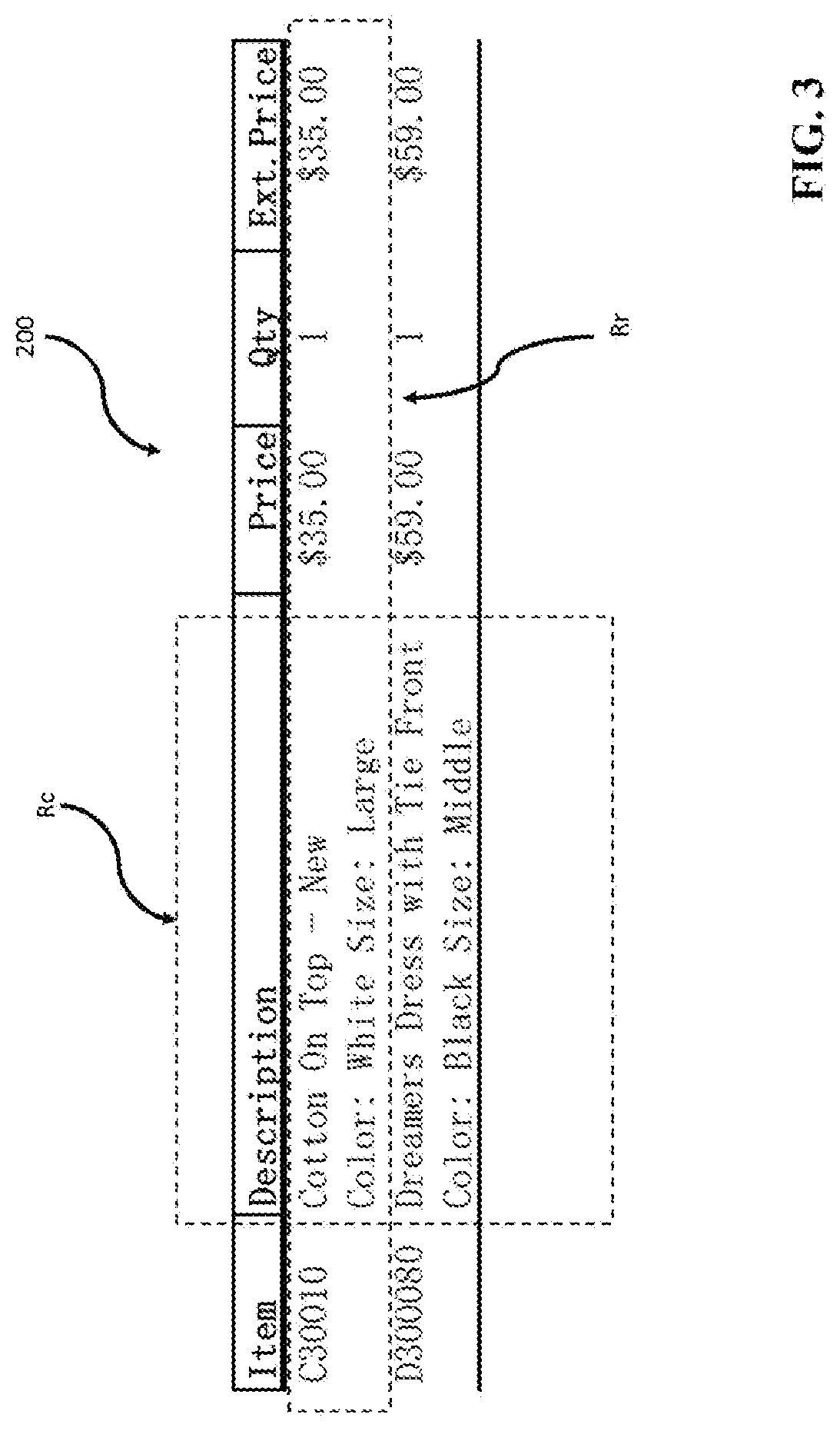Apparatus and Method for Recognizing Image-Based Content Presented in a Structured Layout
a structured layout and image-based content technology, applied in the field of extracting information and table understanding, can solve the problems of difficult table recognition for heterogeneous documents, difficult table recognition for precise extraction, etc., and achieve the effect of maintaining the accuracy of the grouping of cells of the tabl
- Summary
- Abstract
- Description
- Claims
- Application Information
AI Technical Summary
Benefits of technology
Problems solved by technology
Method used
Image
Examples
Embodiment Construction
[0019]In the following description, methods and apparatuses for extracting information from an image-based content in a structured layout, and the likes are set forth as preferred examples. It will be apparent to those skilled in the art that modifications, including additions and / or substitutions may be made without departing from the scope and spirit of the invention. Specific details may be omitted so as not to obscure the invention; however, the disclosure is written to enable one skilled in the art to practice the teachings herein without undue experimentation.
[0020]The present invention provides a method and an apparatus for image-based structured layout content recognition, which can convert structured layout information of an electronic or physical document into editable electronic data and then store the editable electronic data. A structured layout is for texts to be distributed on a page of a document with certain arrangements, such as a table. In accordance with one embo...
PUM
 Login to View More
Login to View More Abstract
Description
Claims
Application Information
 Login to View More
Login to View More - R&D
- Intellectual Property
- Life Sciences
- Materials
- Tech Scout
- Unparalleled Data Quality
- Higher Quality Content
- 60% Fewer Hallucinations
Browse by: Latest US Patents, China's latest patents, Technical Efficacy Thesaurus, Application Domain, Technology Topic, Popular Technical Reports.
© 2025 PatSnap. All rights reserved.Legal|Privacy policy|Modern Slavery Act Transparency Statement|Sitemap|About US| Contact US: help@patsnap.com



